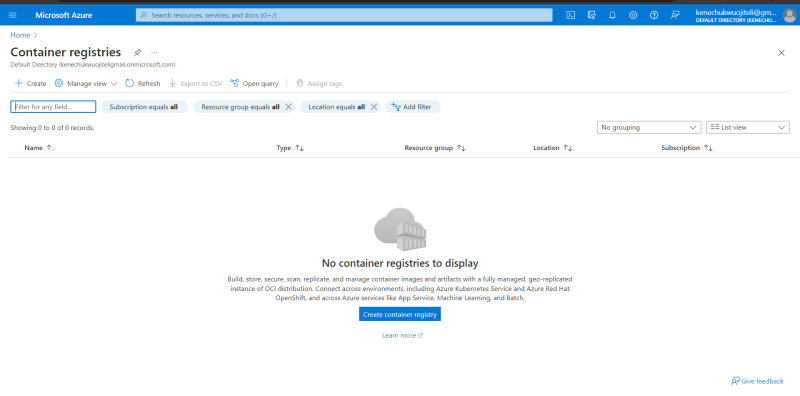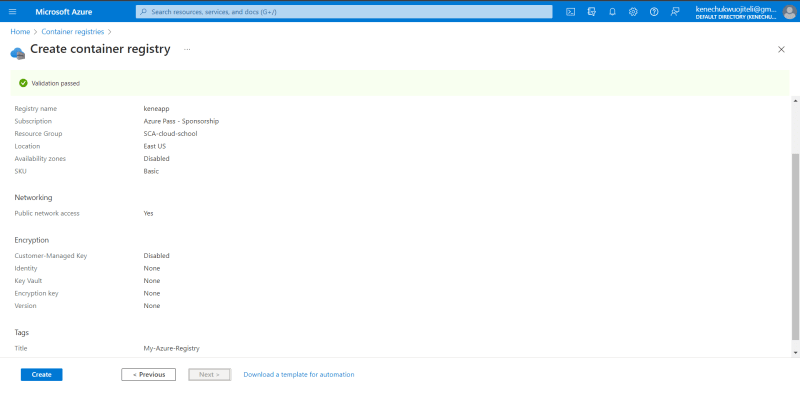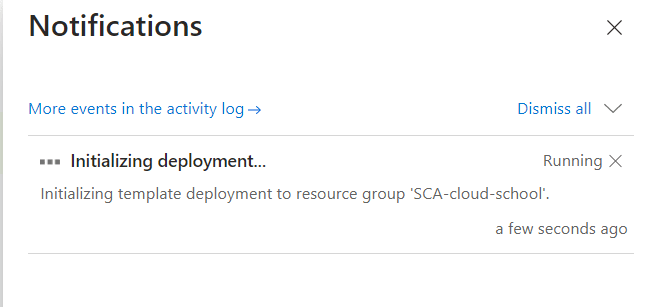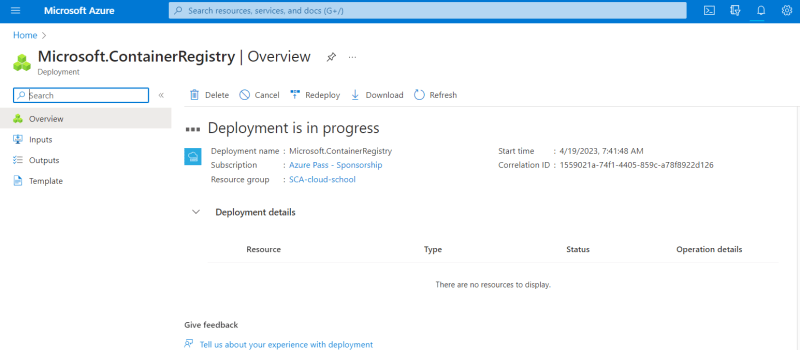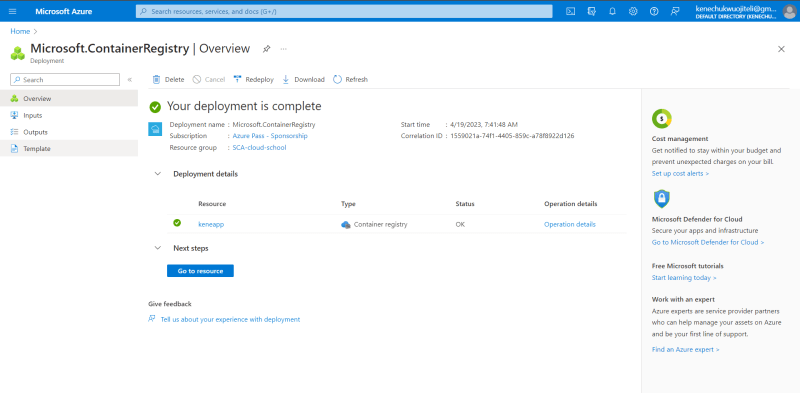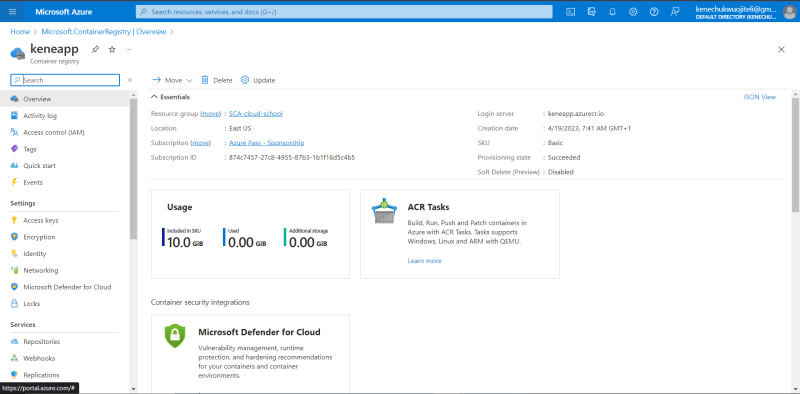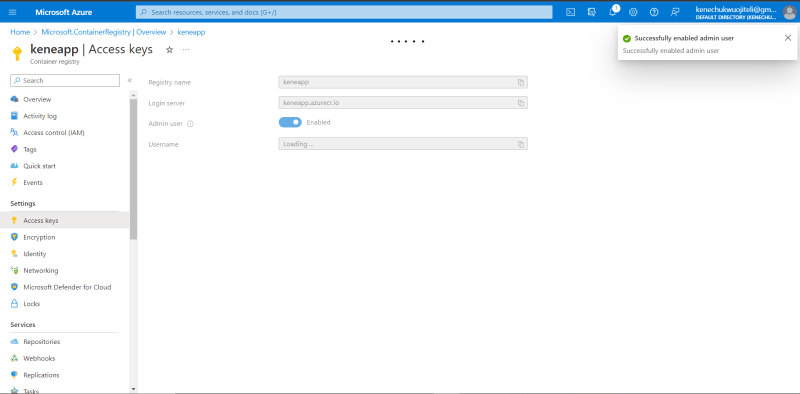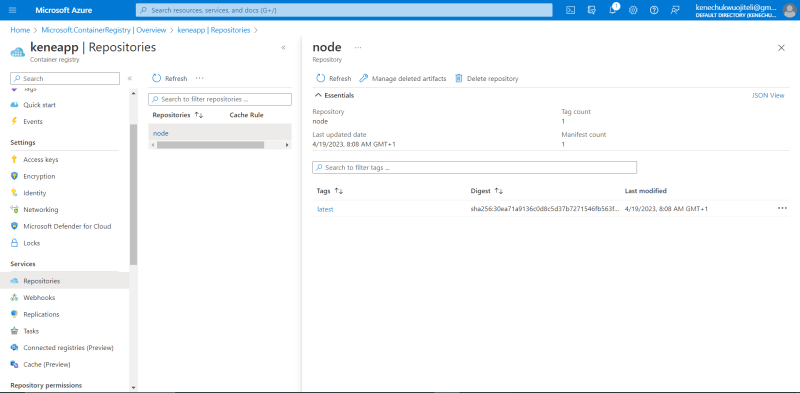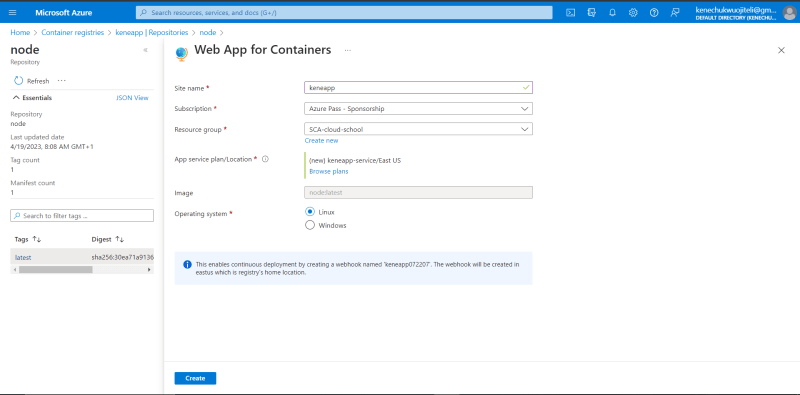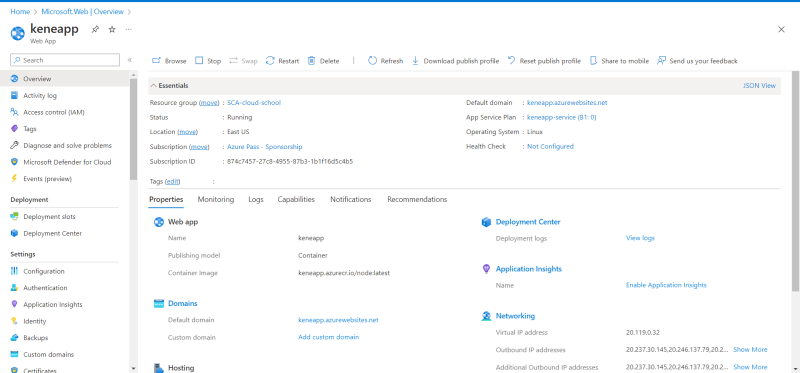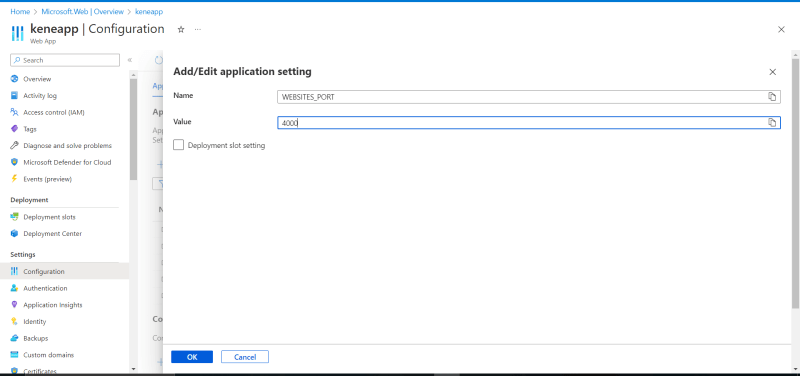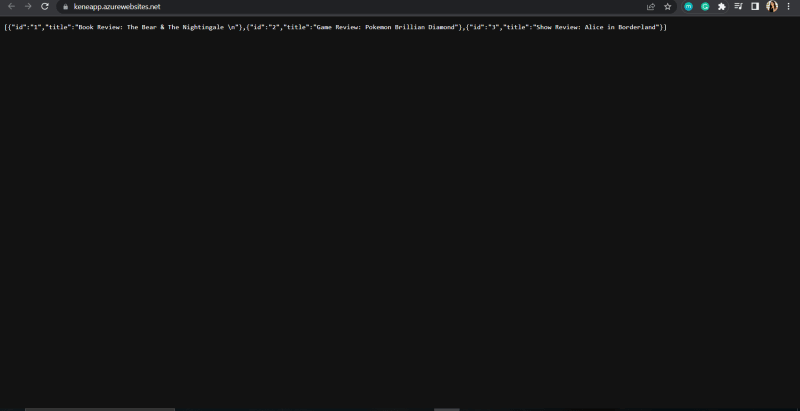
Kene Ojiteli
Posted on April 20, 2023

This article is a walkthrough on how to "dockerize" a node js app and host via azure app service.
Azure app service is a fully managed service which enables you to build and host web apps, mobile back ends, and RESTful APIs in the programming language of your choice without managing infrastructure. This is a Platform as a Service (PAAS) because the job of managing infrastructures is not on the users.
This walkthrough is divided into 2 parts:
- Creating a Docker image (with a node app) and pushing to a registry (Azure Container Registry).
- Hosting the image via Azure app service.
The following tools are needed:
- An Azure account
- Docker and a terminal.
Part 1: Dockerize a Node js app and push to Azure Container Registry
- Login to your azure account and navigate to container registries to create a container registry (this is where our docker image will be stored) by clicking on create container registry.
- Complete the necessary details before clicking create (a summary of mine).
- Progress of ACR being initialized and on the way to getting created and finally successful creation.
- Navigating to my Container Registry dashboard.
- On the LHS, navigate to Settings => Access keys and enable admin user, the details will be used to login to ACR via your terminal on your local machine.
- Navigate to your project directory via terminal and login using the details from the step above
docker login <login server> --username <username> --password <password>
- Build docker image using this command
docker build -t <name>:<tag> .where . is the current directory.
- Check the image exists using
docker imagescommand ( this lists all available images).
- Push the image to ACR using
docker push <name>:<tag>
- On azure portal, navigate to your container registry => repositories to view pushed image.
Part 2: Hosting my docker app on app service
- On the image click the options icon and choose deploy to web app.
- Details for my app service where my docker image is the source, then click create.
- Deployment is completed.
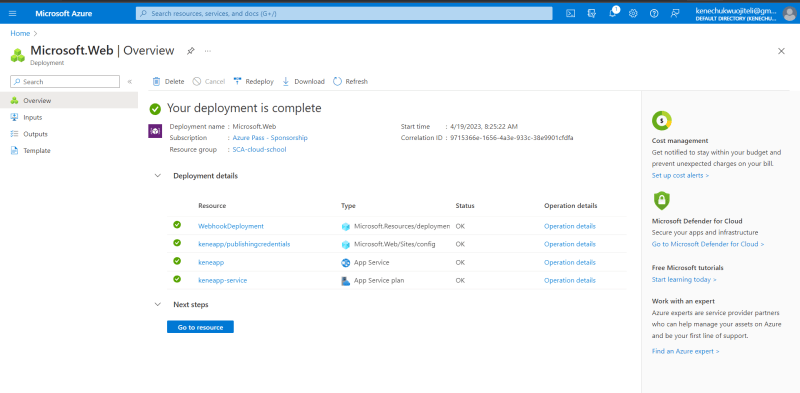
- Navigate to just created app service.
- Following azure's best practices.
- Adding port as a variable to Configurations
- Access the app via default domain on browser
To avoid incurring charges, I cleaned up my resources.
Visit my Github repo to view code.

Posted on April 20, 2023
Join Our Newsletter. No Spam, Only the good stuff.
Sign up to receive the latest update from our blog.
